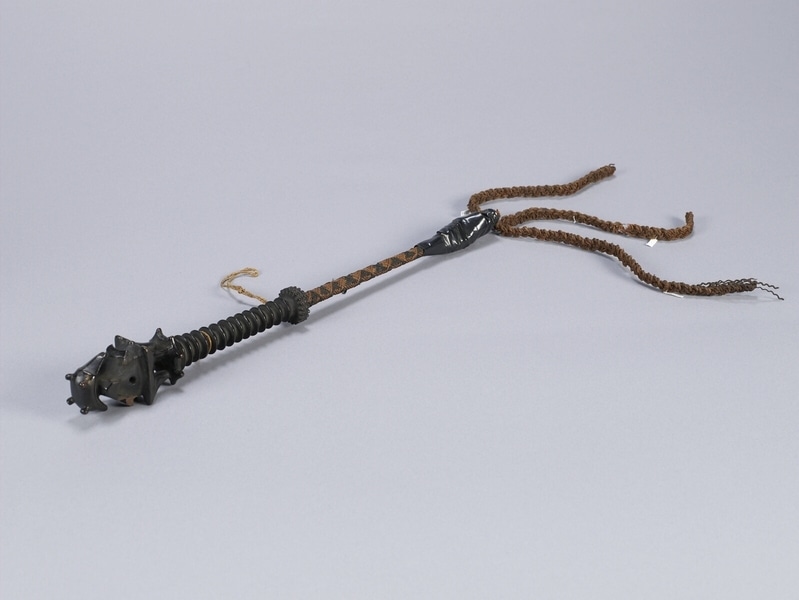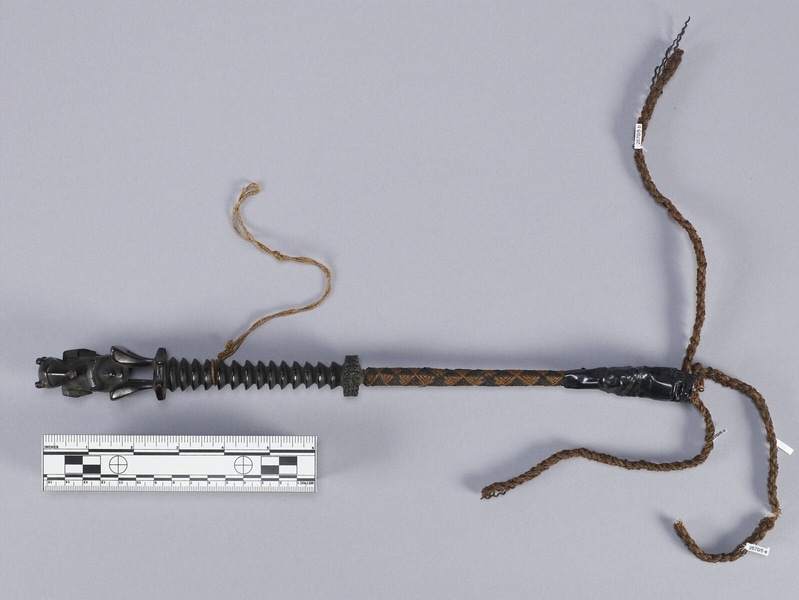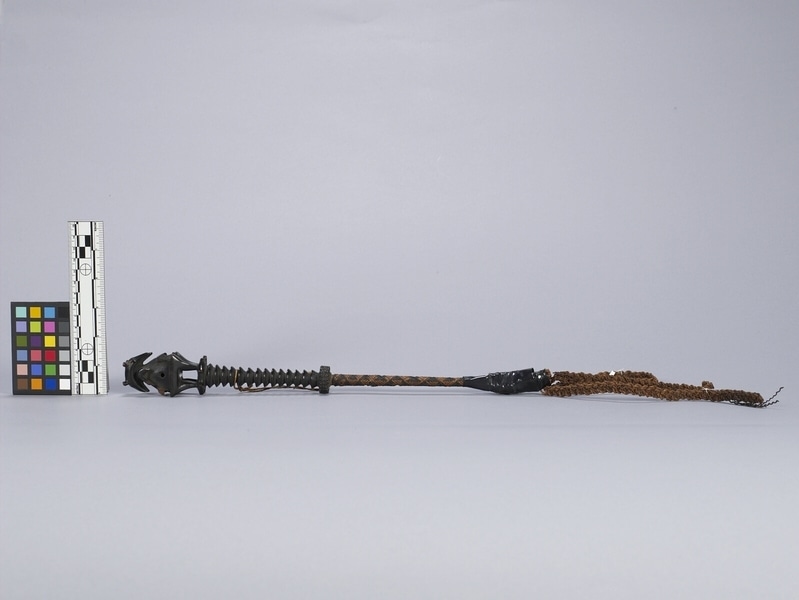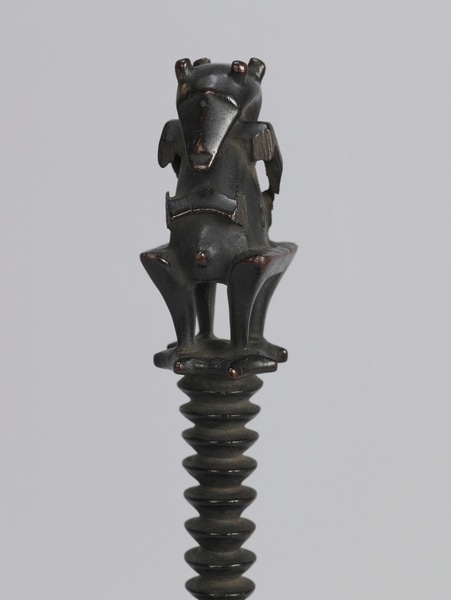Whisk Item Number: 2670/5 a-e from the MOA: University of British Columbia




Description
Whisk with a dark wooden handle wrapped in some areas with woven, light coloured grass in a geometric lozenge-patterned design. Whisk parts (parts b-e) are a braided dark plant fibre and are detached from the shaft. Handle has carved band around it at its end. The whisk has fourteen disc-like nodules connected to a carved section that has four "legs".
History Of Use
Tahiri ra’a, or fly whisk, such as this one would have served as a symbol of rank.
Narrative
This was once owned by Reverend John Williams, a missionary in the South Pacific from 1816 until he was killed on the shores of Erromango, Vanuatu, on November 20, 1939. One of Williams’s Canadian descendants donated the tahiri ra’a to the museum in 2006. A reconciliation ceremony between the people of Erromango and the descendants of John Williams was held in Erromango on November 20, 2009, the 170th anniversary of Williams’s death.
Iconographic Meaning
The two figures on top of the whisk, seated back to back with their hands over their abdomens, could be of some genealogical significance or are perhaps representations of deities or other supernatural beings.
Item History
- Made before 1840
- Collected between 1816 and 1840
- Owned by John Williams
- Owned by Michael A. Williams before May 26, 2006
- Received from Michael A. Williams (Donor) on May 26, 2006
What
- Name
- Whisk
- Identification Number
- 2670/5 a-e
- Type of Item
- whisk
- Material
- wood and fibre
- Part A
- height 3.3 cm, width 37.5 cm, depth 2.9 cm
- Part B
- height 1.2 cm, width 21.5 cm, depth 3.3 cm
- Part C
- height 1.0 cm, width 14.0 cm, depth 4.0 cm
- Part D
- height 1.1 cm, width 10.0 cm, depth 2.4 cm
- Part E
- height 1.1 cm, width 5.8 cm, depth 2.4 cm
Who
- Culture
- Eastern Polynesian
- Previous Owner
- John Williams and Michael A. Williams
- Received from
- Michael A. Williams (Donor)
Where
- Holding Institution
- MOA: University of British Columbia
- Made in
- “Austral Islands” ?
When
- Creation Date
- before 1840
- Collection Date
- between 1816 and 1840
- Ownership Date
- before May 26, 2006
- Acquisition Date
- on May 26, 2006
Other
- Condition
- poor
- Current Location
- Case 64
- Accession Number
- 2670/0005 a-e